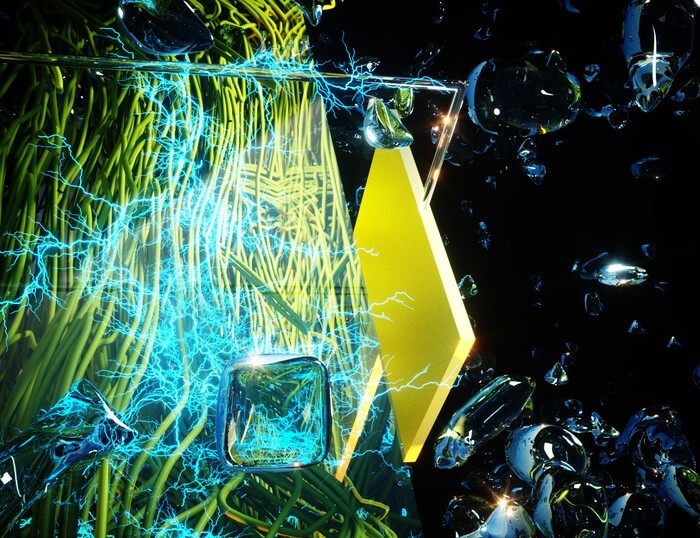A team of engineers at the University of Massachusetts Amherst has achieved a remarkable feat by demonstrating that virtually any material can be transformed into a device capable of continuously harvesting electricity from the surrounding humidity. This groundbreaking discovery hinges on the ability to incorporate nanopores, each less than 100 nanometers in diameter, into the material. The study detailing this breakthrough has been published in the prestigious journal Advanced Materials.
Xiaomeng Liu, lead author of the research paper and a graduate student in electrical and computer engineering at UMass Amherst’s College of Engineering, expressed great enthusiasm, stating, “This is very exciting. We are opening up a wide door for harvesting clean electricity from thin air.”
Jun Yao, senior author of the paper and assistant professor of electrical and computer engineering at UMass Amherst, explained the immense potential of this development, emphasizing, “The air contains an enormous amount of electricity. Think of a cloud, which is nothing more than a mass of water droplets. Each of those droplets contains a charge, and when conditions are right, the cloud can produce a lightning bolt—but we don’t know how to reliably capture electricity from lightning. What we’ve done is to create a human-built, small-scale cloud that produces electricity for us predictably and continuously so that we can harvest it.”
The foundation of this artificial cloud lies in what Yao and his colleagues have termed the “generic Air-gen effect,” building upon their previous work in 2020, which demonstrated the continuous extraction of electricity from the air using a specialized material made of protein nanowires cultivated from the bacterium Geobacter sulfurreducens. Yao further explained the significance, stating, “What we realized after making the Geobacter discovery is that the ability to generate electricity from the air—what we then called the ‘Air-gen effect’—turns out to be generic: literally any kind of material can harvest electricity from air, as long as it has a certain property.”
The crucial property required for this process is having nanopores smaller than 100 nanometers, less than a thousandth of the width of a human hair. This parameter is determined by the “mean free path,” which refers to the distance a single molecule of a substance, in this case, water in the air, travels before colliding with another molecule of the same substance. The mean free path for suspended water molecules in the air is approximately 100 nm.
Recognizing this number as a foundation, Yao and his team designed an electricity harvester that consists of a thin layer of material filled with nanopores smaller than 100 nm. This allows water molecules to pass from the upper to the lower part of the material. However, due to the minuscule size of each pore, the water molecules collide with the pore’s edge as they traverse the thin layer. Consequently, the upper part of the material is bombarded with a greater number of charge-carrying water molecules than the lower part, leading to a charge imbalance similar to that found in a cloud. As a result, a battery-like effect is created, producing electricity as long as there is humidity in the air.
Yao elaborated on the simplicity and far-reaching possibilities of this concept, stating, “The idea is simple but it’s never been discovered before, and it opens all kinds of possibilities.” The electricity harvester can be constructed from diverse materials, offering cost-effective and adaptable options for various environments. Yao envisioned, “You could imagine harvesters made of one kind of material for rainforest environments, and another for more arid regions.”
Moreover, since humidity is omnipresent, the harvester can operate continuously, regardless of day or night, rainfall or shine, and even without wind—a significant advantage over
technologies like wind or solar power, which are limited by specific conditions.
In addition, due to the three-dimensional diffusion of air humidity and the ultrathin thickness of the Air-gen device, which is a fraction of the width of a human hair, thousands of these devices can be stacked atop one another. This allows for efficient scaling of energy production without increasing the device’s physical footprint. Such an Air-gen device has the potential to deliver kilowatt-level power for general electrical utility usage.
Yao painted a vivid picture of a future world where clean electricity is ubiquitous, remarking, “Imagine a future world in which clean electricity is available anywhere you go. The generic Air-gen effect means that this future world can become a reality.”
The research was supported by the National Science Foundation, Sony Group, Link Foundation, and the Institute for Applied Life Sciences (IALS) at UMass Amherst. The IALS combines interdisciplinary expertise from 29 departments on the UMass Amherst campus to translate fundamental research into innovative solutions that enhance human health and well-being.
Contacts:
Jun Yao – [email protected]
Daegan Miller – [email protected]


